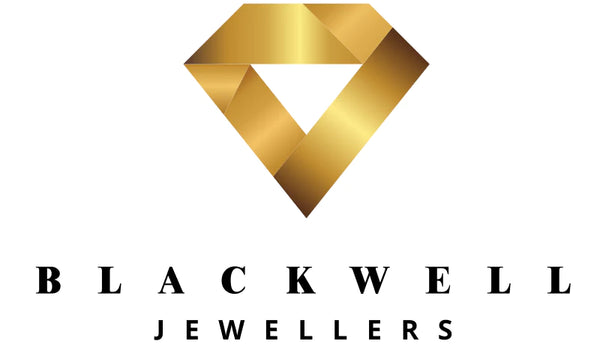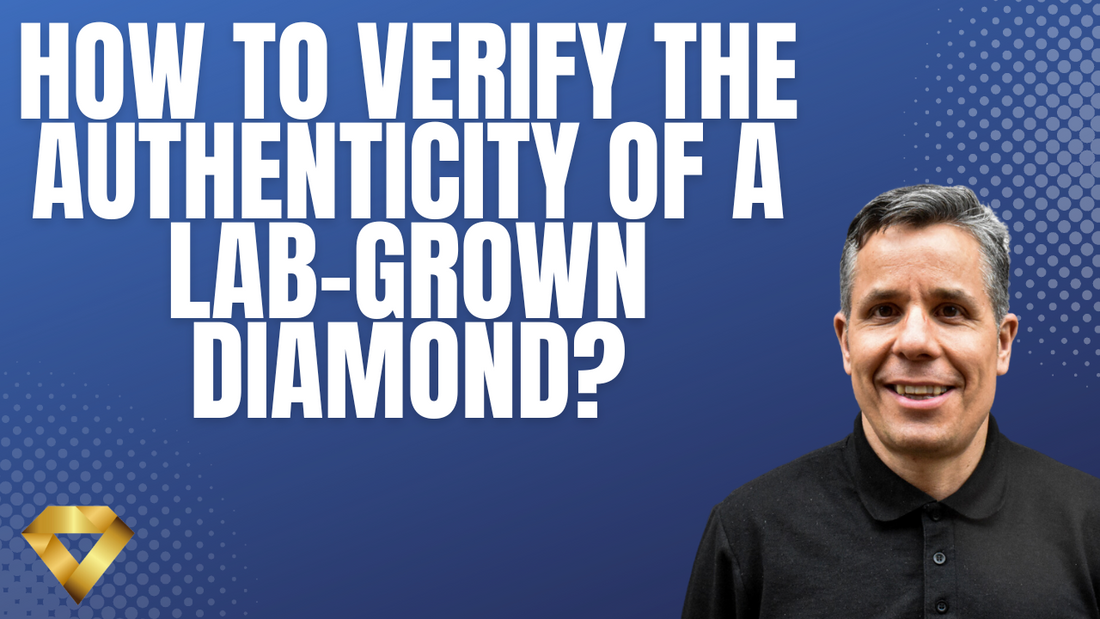
In today's sparkling world of diamonds, lab-grown gems have emerged as a popular and ethical alternative to their natural counterparts. But with this rise in popularity comes a crucial question: How can you verify the authenticity of a lab-grown diamond? Let's dive into the fascinating world of lab-grown diamonds and uncover the secrets to authenticating these modern marvels.
Introduction: The Rise of Lab-Grown Diamonds
Lab-grown diamonds have taken the jewellery world by storm, and for good reason. These man-made wonders offer the same brilliance and beauty as natural diamonds, but with a unique origin story. The history of lab-grown diamonds dates back to the 1950s, but it's only in recent years that they've become a viable option for consumers.
Why does verifying the authenticity of lab-grown diamonds matter? It's simple: as with any valuable purchase, you want to ensure you're getting exactly what you pay for. Whether you're eyeing a stunning lab-grown diamond necklace or considering a pair of earrings, knowing how to verify their authenticity empowers you to make informed decisions.
The market for lab-created diamonds is booming. According to a report by Allied Market Research, the global lab-grown diamond market is expected to reach $49.9 billion by 2030, growing at a CAGR of 9.4% from 2021 to 2030. This surge in popularity makes understanding authentication methods more crucial than ever.
Understanding Lab-Grown Diamonds
Before we dive into verification methods, let's get to know these gems a little better.
What are lab-grown diamonds?
Lab-grown diamonds, also known as cultured diamonds, are diamonds created in a controlled laboratory environment. They have the same chemical composition, crystal structure, and optical properties as natural diamonds. The key difference? They're born in a lab, not deep within the Earth.
How are they made?
There are two primary methods for creating lab-grown diamonds:
- High Pressure High Temperature (HPHT): This method mimics the natural diamond formation process, using high pressure and temperature to transform carbon into diamond.
- Chemical Vapour Deposition (CVD): In this process, a thin slice of diamond seed is placed in a chamber and exposed to carbon-rich gas at high temperatures. The carbon atoms attach to the seed, slowly building a diamond.
Comparison with natural diamonds
Here's a quick comparison of lab-grown and natural diamonds:
|
Characteristic |
Lab-Grown Diamonds |
Natural Diamonds |
|
Chemical Composition |
100% carbon |
100% carbon |
|
Hardness (Mohs scale) |
10 |
10 |
|
Origin |
Laboratory |
Earth's mantle |
|
Formation Time |
Few weeks to months |
Millions of years |
|
Price |
Generally 20-40% less |
Higher |
|
Environmental Impact |
Lower |
Higher |
Ethical and environmental considerations
One of the main draws of lab-grown diamonds is their ethical and environmental appeal. They don't require mining, which can have significant environmental impacts and potential human rights concerns. This makes lab-grown diamonds an attractive option for environmentally conscious consumers looking to buy lab grown diamond jewellery.
The Challenge of Distinguishing Lab-Grown from Natural Diamonds
Telling lab-grown and natural diamonds apart is no easy feat. Even experienced jewellers can struggle to differentiate them with the naked eye. This challenge arises from the fact that lab-grown diamonds are, in essence, real diamonds. They share the same physical and chemical properties as their natural counterparts.
Some common misconceptions include:
- Lab-grown diamonds are "fake" (They're not; they're real diamonds, just created in a different environment)
- Lab-grown diamonds are easy to spot (In reality, advanced tools are often needed)
- All synthetic diamonds are lab-grown (Some synthetics, like cubic zirconia, are diamond simulants, not true diamonds)

Key Methods to Verify Lab-Grown Diamond Authenticity
Now, let's explore the various ways to verify the authenticity of lab-grown diamonds.
Professional Certification
One of the most reliable ways to verify a lab-grown diamond's authenticity is through professional certification. Gemmological laboratories play a crucial role in this process.
Gemmological laboratories and their role
Reputable labs like the Gemmological Institute of America (GIA) and International Gemmological Institute (IGI) offer grading services for lab-grown diamonds. These labs use advanced equipment and expert knowledge to analyse diamonds and provide detailed reports.
Types of certificates for lab-grown diamonds
Lab-grown diamonds typically come with certificates that provide information about their characteristics. These might include:
- Carat weight
- Colour grade
- Clarity grade
- Cut grade
- Growth method (HPHT or CVD)
- Any treatments applied
How to read a lab-grown diamond certificate
When you buy lab grown diamond jewellery, if it comes with a certificate, here's what to look for:
- Laboratory name: Ensure it's from a reputable lab.
- Report number: This unique identifier can be used to verify the report online.
- Diamond specifications: Check that these match the diamond you're purchasing.
- Growth method: This should be clearly stated for lab-grown diamonds.
- Grading scales: Familiarise yourself with the lab's grading scales for colour and clarity.
Advanced Technologies for Diamond Verification
Several high-tech methods are used to verify lab-grown diamonds:
Spectroscopy techniques
Spectroscopy analyses how light interacts with the diamond. Different types of diamonds absorb and emit light differently, allowing experts to distinguish between natural and lab-grown diamonds.
X-ray imaging
X-ray topography can reveal subtle differences in the crystal structure of natural and lab-grown diamonds.
Photoluminescence analysis
This technique examines how a diamond emits light when exposed to specific wavelengths, helping identify its origin.
Visual Inspection Techniques
While not fool proof, visual inspection can provide clues about a diamond's origin.
Using a loupe or microscope
A 10x loupe or microscope can reveal inclusions and growth patterns that might indicate whether a diamond is natural or lab-grown.
What to look for: inclusions, growth patterns, and crystal structure
- Inclusions: Lab-grown diamonds often have metallic inclusions, while natural diamonds typically have mineral inclusions.
- Growth patterns: HPHT diamonds may show cube or octahedron patterns, while natural diamonds often have parallel growth lines.
- Crystal structure: Some lab-grown diamonds exhibit a cross-shaped phosphorescence under UV light.

Limitations of visual inspection
It's important to note that visual inspection alone is not definitive. Many lab-grown diamonds are visually indistinguishable from natural diamonds, even to trained eyes.
The Role of Diamond Testers
Diamond testers are handheld devices that measure thermal and electrical conductivity. While useful for distinguishing diamonds from other gemstones, most standard testers can't differentiate between natural and lab-grown diamonds.
More advanced testers, like those that use spectroscopic technology, can potentially identify lab-grown diamonds, but these are typically only available to professionals.
Buying Lab-Grown Diamond Jewellery: What to Look For
When you're in the market for lab-grown diamond jewellery, whether it's a necklace, earrings, or any other piece, knowing what to look for can help ensure you're getting an authentic, high-quality product. Here are some key factors to consider:
Trusted Retailers and Brands
- Reputation: Choose retailers with a strong reputation for selling lab-grown diamonds, like Blackwell Jewellers.
- Transparency: Look for sellers who are open about their sourcing processes.
- Return Policy: Ensure the retailer offers a reasonable return policy, allowing you time to have the diamond independently verified if desired.
- Customer Reviews: Look for feedback from previous customers, particularly regarding the authenticity and quality of the lab-grown diamonds.
Questions to Ask Before Purchasing
When buying lab-grown diamond jewellery, don't hesitate to ask the seller these important questions:
- "What certification does this lab-grown diamond come with?"
- "Can you explain the growth method used for this diamond?"
- "What are your policies on diamond authentication and returns?"
- "Do you offer any post-purchase verification services?"
- "How do you ensure the authenticity of your lab-grown diamonds?"
Red Flags: Spotting Fake Lab-Grown Diamonds
When purchasing lab grown diamond jewellery, be aware of these red flags:
- Too good to be true pricing: If the price is significantly lower than other lab-grown diamonds of similar quality, be cautious.
- Unclear origins: The seller should be transparent about the diamond's origin and growth method.
- Inconsistent appearance: Under magnification, fake diamonds often show bubbles, scratches, or uneven facets.
"If you're unsure about a diamond's authenticity, always consult a professional. It's better to be safe than sorry when making such a significant purchase." - James Marsh, Gemmologist at Blackwell Jewellers
The Importance of Trusted Sellers
Choosing a reputable seller is crucial when buying lab-grown diamonds. Here are some tips:
- Research the retailer: Look for established businesses with good reputations, like Blackwell Jewellers.
- Ask questions: A good seller will be happy to answer your queries about their lab-grown diamonds.
- Review policies: Look for favourable return policies and guarantees.

Common Misconceptions About Lab-Grown Diamond Authentication
As lab-grown diamonds have gained popularity, several myths and misconceptions have emerged about their authentication. Let's debunk some of these:
Myth 1: Lab-Grown Diamonds Are Fake Diamonds
Fact: Lab-grown diamonds are real diamonds, with the same chemical composition and physical properties as natural diamonds. They're not to be confused with diamond simulants like cubic zirconia or moissanite.
Myth 2: You Can Always Tell a Lab-Grown Diamond with the Naked Eye
Fact: In most cases, it's impossible to distinguish a lab-grown diamond from a natural diamond without specialised equipment. Even experienced jewellers often can't tell the difference visually.
Myth 3: All Diamond Testers Can Identify Lab-Grown Diamonds
Fact: Many standard diamond testers only distinguish between diamonds (both natural and lab-grown) and non-diamond materials. They can't differentiate between natural and lab-grown diamonds.
Myth 4: Lab-Grown Diamonds Are Always Flawless
Fact: While it's possible to create flawless lab-grown diamonds, many have inclusions and imperfections, just like natural diamonds. The presence of flaws doesn't indicate whether a diamond is natural or lab-grown.
Understanding these misconceptions is crucial when learning how to verify the authenticity of a lab-grown diamond. It helps buyers make informed decisions and avoid common pitfalls in the authentication process.
The Future of Lab-Grown Diamond Authentication
As technology advances, so do the methods for creating and authenticating lab-grown diamonds. Here's a glimpse into what the future might hold:
Emerging Technologies
- Blockchain for Diamond Tracking: This could provide an unalterable record of a diamond's journey from lab to consumer, enhancing transparency and authenticity verification.
- AI and Machine Learning: Advanced algorithms could analyse diamond characteristics more quickly and accurately than ever before, making authentication faster and more accessible.
- Nano-scale Inscriptions: Invisible to the naked eye, these could serve as a "fingerprint" for lab-grown diamonds, making them easier to identify and track.
- Quantum Optical Fingerprinting: This cutting-edge technology could provide a unique, unclonable identifier for each lab-grown diamond.
Potential Changes in the Industry
- Standardisation of Authentication Methods: The industry may move towards a more unified approach to lab-grown diamond authentication.
- Increased Consumer Tools: We might see the development of more sophisticated, yet user-friendly tools for consumers to verify their lab-grown diamonds at home.
- Integration with Smart Jewellery: Future lab-grown diamond jewellery might include built-in authentication technology, allowing easy verification through smartphone apps.
Consumer Awareness and Education
As lab-grown diamonds become more prevalent, consumer education will play a crucial role:
- Increased Transparency: Retailers like Blackwell Jewellers may offer more detailed information about their lab-grown diamonds' origins and characteristics.
- Educational Initiatives: The industry might invest more in educating consumers about lab-grown diamonds and authentication methods.
- Ethical Consumerism: As awareness grows, consumers may place even greater importance on verifying the ethical production of their lab-grown diamond jewellery.
Ethical Considerations in Lab-Grown Diamond Authentication
Transparency is key in the lab-grown diamond industry. Consumers have the right to know exactly what they're buying, whether it's a lab-grown diamond necklace or a pair of earrings.
Industry standards are also evolving. Organisations like the Lab Grown Diamond Council are working to establish best practices for growing, distributing, and selling lab-grown diamonds.
FAQs About Verifying Lab-Grown Diamond Authenticity
Q: Can a jeweller tell if a diamond is lab-grown?
A: Not always. Many lab-grown diamonds are visually identical to natural diamonds, requiring specialised equipment for definitive identification.
Q: Are lab-grown diamonds more likely to be fake?
A: No, lab-grown diamonds are real diamonds. However, as with natural diamonds, there's always a risk of encountering imitations or misleading sales practices.
Q: How much does professional authentication cost?
A: Costs vary, but expect to pay anywhere from £100 to £200 for a professional lab report.
Q: Can lab-grown diamonds be insured?
A: Yes, many insurance companies offer coverage for lab-grown diamonds, just like natural diamonds.
Conclusion: Empowering Consumers in the Lab-Grown Diamond Market
Verifying the authenticity of lab-grown diamonds involves a combination of professional certification, advanced technology, and consumer awareness. While it may seem daunting, understanding these methods empowers you to make informed decisions when purchasing lab-grown diamond jewellery.
Remember, whether you're buying a lab-grown diamond necklace, a pair of earrings, or any other piece, always purchase from reputable sellers like Blackwell Jewellers. They can provide the necessary answers to any questions you might have about your lab-grown diamond's authenticity.
As technology advances and the market evolves, staying informed about authentication methods will ensure you can confidently enjoy the beauty and ethics of lab-grown diamonds. After all, these gems offer all the sparkle of natural diamonds, with the added brilliance of technological innovation and ethical sourcing.



